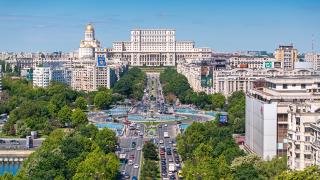As Malaysia prepares to host to the 23rd AFCM Technical Symposium in April, ICR presents an overview of recent activity and prospects for the Southeast Asian nation. This year, the construction market will be underpinned by higher activity in the residential sector and the acceleration of public engineering projects, translating into increased orders for the cement industry once large-scale projects go into full swing.
Last year, Malaysia's economy continued to expand despite the more challenging external environment. GDP advanced by 5.1 per cent, within the government's 5.0-5.5 per cent forecast range, but more slowly than the 7.2 per cent growth in 2010. According to Bank Negara Malaysia, favourable domestic demand conditions were supported by both private and public sector spending.
The government has been aiming to attract more foreign and domestic investments under the 10th Malaysia Plan and Economic Transformation Programme (ETP). The former, launched in June 2010, targets six per cent annual GDP growth and aims to raise per capita income to US$12,000, identifying 12 national key economic areas that have potential to generate income. Meanwhile, the US$444trn ETP, announced in September 2010, is an ambitious 10-year plan aimed at restructuring the economy and raising Malaysia from a middle-income into a high-income nation by 2020. The programme, however, is typically aimed at driving economic development rather than building new infrastructure and relies heavily on the private sector for its success. Various projects are in the pipeline for making Malaysia the number one regional hub for oil field services and global biodiversity, more conducive shopping for tourists and revitalising the capital market. Plans include the construction of 141km of new rail lines and a high-speed rail system to connect the nation's capital, Kuala Lumpur (KL), to Singapore and revitalising the Klang river into a heritage and commercial district.
On the outlook for 2012, the central bank noted that growth prospects have "become increasingly uncertain" due to the ongoing sovereign debt crisis in Europe. "Going forward, the more challenging external environment could present greater downside risks to Malaysia's growth prospects," it said in a recent statement.
In 2012, domestic demand – in particular private sector expenditure – is expected to play a more significant role in driving economic expansion. Consumption is seen rising 7.6 per cent in this year (from 8.1 per cent in 2011) and private expenditure 8.7 per cent (8.3 per cent).
The budget set out by the Malaysian Prime Minister Datuk Seri Najib Tun Razak in October last year aims to help the country reach a GDP growth of between 5.5-6 per cent for 2012. Overall, it expects the country's strong economic fundamentals, pragmatic macroeconomic policies and the ETP to enhance domestic sources of growth.
